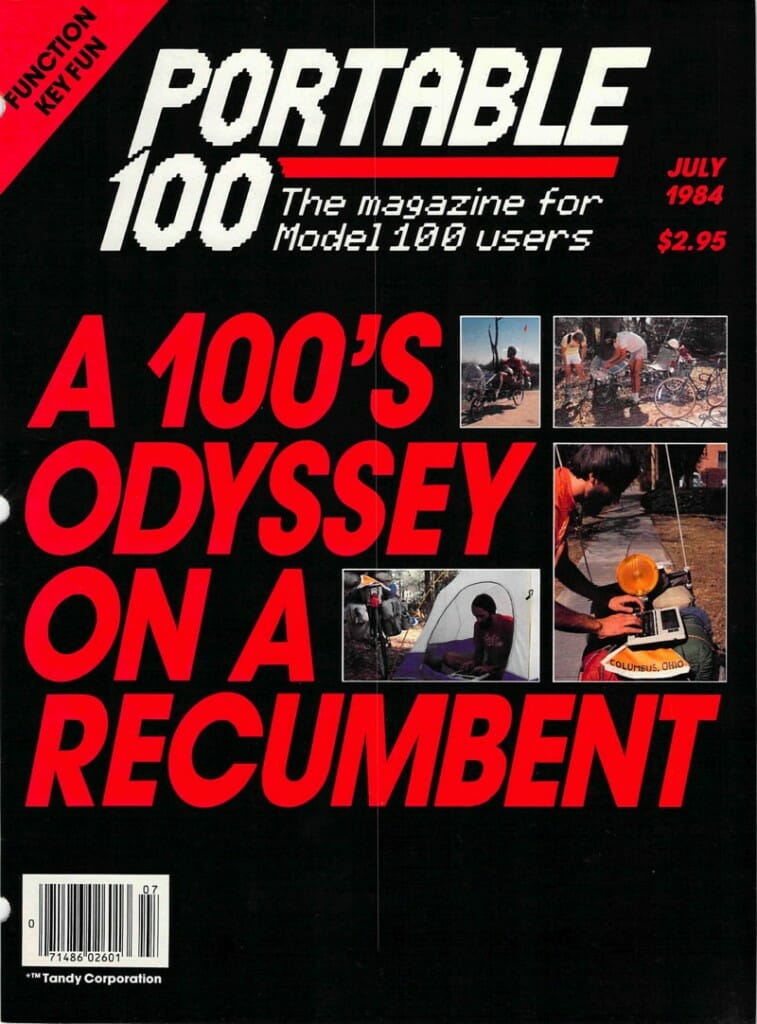
A Model 100 Odyssey on a Recumbent
One of the key enabling technologies of my paleo-technomadic life (in addition to CompuServe, solar panels, and a recumbent bicycle) was my little Radio Shack Model 100 computer, a primitive laptop that was earth-shaking for its time. Made in Japan by Kyocera, it was really the first practical and affordable portable computer… though when I think of the over-$1000 price and what it really included, I have to chuckle!
Still, I could not have left Ohio in 1983 without this, even though much more robust machines came along a year later. This magazine was devoted to the 100, which had a huge and passionate following. The idea of being productive while traveling was still very strange in the public mind, though fellow users of these sweet little machines understood it perfectly and were hungry for tales of tech-enabled adventure.
by Steven K. Roberts
Portable 100
July, 1984
Photos by Katherine Peden
When this bicyclist embarked on his solo pedal across the country, his sole companion was his 100. The portable recorded some unusual impressions — and made some of its own.
I’m an agent of future shock. This first became clear on the morning of September 29, 1983, a scant 100 miles into the journey. I glided into Christiansburg, OH (population 593) on my wondrous Winnebiko. Dismounting in front of the town’s only pay phone, I uploaded a magazine article to my assistant back in Columbus.
I hunkered-down on the pavement in the autumn sunlight, zipped open the briefcase, and exposed the Model 100. Fitting the acoustic cups to the handset, I dialed CompuServe and began transmitting a file.
A dusty pickup truck rattled to a stop beside me, and after a moment there emerged an even dustier farmer. He squinted at the bike, then at me, then again at the bike. Slowly chawin’ tobacco, he walked around the machine and noted the tilted solar panels, the under-seat steering, the 18-speed derailleur, the drum brake, the antenna, and the liquid crystal displays in front of the seat. He peered at me as I sat there watching text scroll by — and scrunching up his face in a quizzical look, he finally spoke:
“Are yew with NASA?”
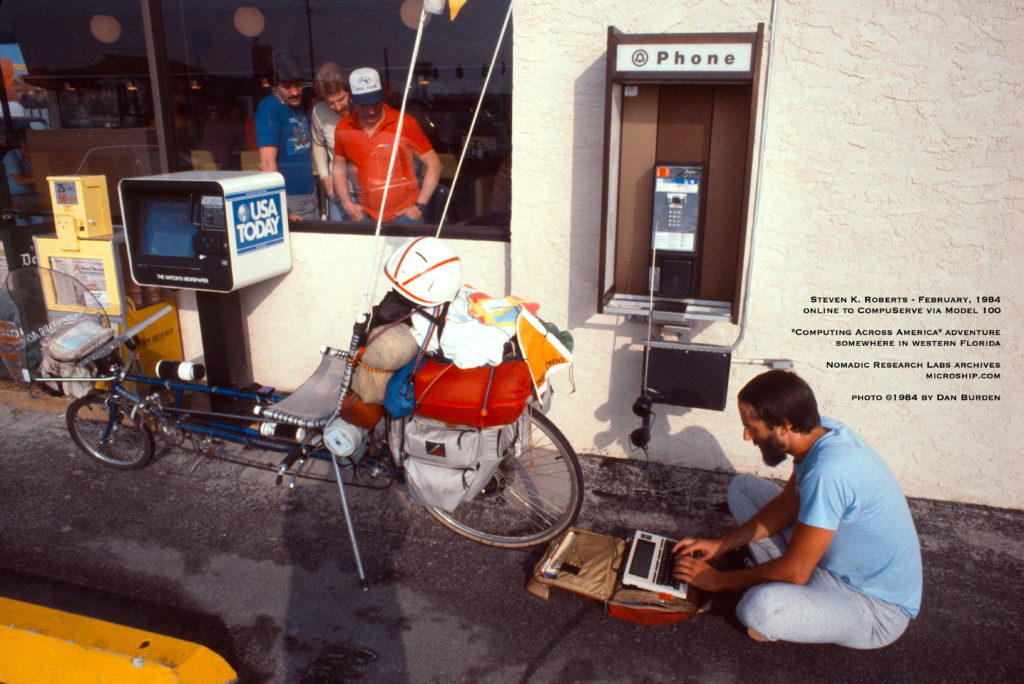
Over 3,600 miles of pavement have passed under my wheels since that moment. At this writing, I’m nearing the end of a winter layover in Florida; as you read this, I should be approaching the West Coast and the 6,000-mile mark. The whole odyssey is expected to take the form of a 14,000-mile loop around the United States.
I’ve wanted to travel on this scale for years, but there has always been one major catch: money. My savings account would never support a year or two on the road, and my business — freelance writing — was too cumbersome to carry on a bicycle. Valiantly I tried, though.
In 1980 I pieced together a dual-drive CP/M system that would fit in a bicycle trailer, and then promptly tore a ligament in my right knee on a training ride. Dismayed, I bought a motor home and drove all winter at 8 mpg. Somehow it just wasn’t the same.
But now it’s 1984, and although we’re still a long way from the ideal portable computer, we do have something quite serviceable. Right now it’s clattering away in this shaded campsite, attached to a 4AH nickel-cadmium battery charged by the sun. The whole package: office, kitchen, bedroom, and vehicle, weighs-in at under 150 pounds.
Upon this human/solar-powered conveyance, I’m maintaining a vigorous, often exhausting, writing business. Technology surfaces everywhere: the Ohio farmer’s response was so typical it could symbolize the entire journey. (NASA, eh? Is this a Loony Excursion Module? I once told a marine sergeant at Camp Lejeune that it was a “human-powered assault vehicle,” but that’s a different story…)
The technologies serve purposes other than making jaws drop. Let’s look at the whole package then consider the information flow rendering the business practical and profitable.
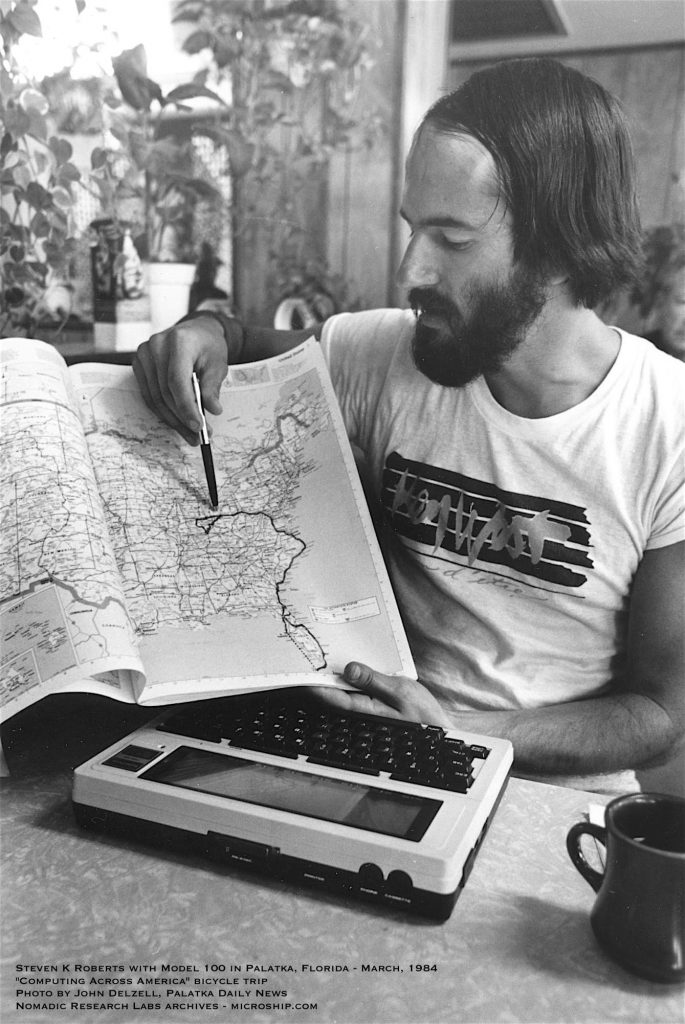
Office on Wheels
The bicycle is a recumbent, offering considerably more comfort and efficiency than old-fashioned bicycles. It’s difficult to fit into hotel elevators and sailboat cabins, of course, but for those long hours on the highway, it can’t be beat. The handlebars are under the seat, and my entire body — except for a pair of energetically pumping legs — is relaxed. I can climb hills more effectively, since there is something solid for me to push back against, and stability is greater than it would appear at first glance.
The net effect is a delightful sense of comfort that I’ve never experienced on a traditional bicycle, along with a brisk ride that has so far hit 44 mph — with a bit of gravity assistance (I managed 3 mph on the other side of the same mountain).
Added to this is the touring gear — on the heavy side, perhaps, but quite well-suited to the application. The tent is a “3-man dome” (the three would have to be very good friends), and all camping and cooking equipment is standard state-of-the-art stuff from stores with woodsy-sounding names.
But here we diverge from the norm. The white bag on the bow contains the Saft-made battery pack along with charge-monitoring circuitry and voltage regulators for the accessories. It also houses a CB radio for emergencies. (It’s culturally useless, but ideal for calling for help or berating aggressive truckers. I did that once outside of Jacksonville after a narrow brush with death, and the driver’s response to my not-entirely-polite harangue was: “You got a CB on that thing?”)
Anyway, the white bag also houses a security system that beeps me via a pocket pager when vibration sensors detect tampering. More than once I’ve dashed out of a restaurant with pasta in my beard to apprehend the thief, only to find a curious tourist wiggling the handlebars: “Look! Here’s how he steers it!”
The battery pack’s biggest load, however, is the lighting system. Controlled by a switch panel under the seat are a sealed-beam halogen headlight, an automotive taillight, a yellow highway barricade flasher, and a xenon strobe atop the flagpole. At night, the bike suggests either an emergency-in-progress or a carnival, depending on your frame of mind. In either case, drivers carefully avoid me. In camp, I can plug in a small fluorescent light when the friendly flickering candle is insufficient for work.

The battery is charged by a solar panel — a Solarex semicrystalline unit that has so far withstood physical abuse including rain, intense sun, extended vibration, and freezing. Mounted on a ball-and-socket tripod mechanism, the panels can be manually tilted to face the sun — or set horizontally to make a tabletop for occasional fast-food stops.
Inevitably, there are extended cloudy periods when the panels only serve up a trickle instead of their customary 300-odd milliamps, and I can avoid being rendered powerless at these times by pulling out a small charger and plugging it into the nearest wall. But normal system use is fully supported by the sun.
Other electronic accessories include: camera, stereo tape recorder, FM receiver, and Model 100. An octogenarian at a campground once quavered, “Looks like the only thing you forgot is a grandfather clock.” By coincidence, I had just downloaded a grandfather clock simulator from CIS’s Model 100 SIG. With a flourish, I whipped out the computer and fired up the program, leaving my aged friend shaking his head speechlessly.
It never fails to astound me when someone asks, upon being shown the 100, “So, uh, do you type while you’re riding?”
No, the computer is strictly for camps and houses and beaches and anywhere except the highway. It obviously needs no introduction in this magazine, and I suppose it’s use is typical but for the environment in which it finds itself. I spend most of my time in TEXT, with TELCOM handling the file transmissions back to Ohio and other network activities.
Note: I wasn’t thinking far enough ahead when I wrote this in 1984! The Winnebiko II that rolled out two years later did allow me to write while riding, with a hack to the Model 100 that enabled typing on a handlebar chord keyboard.
The 32K of memory doesn’t go very far when my fingers start flying in earnest, and some external file storage is essential. So are daily business communication, manuscript transmission, mail, and more. For all this, I use a half-dozen CompuServe accounts, each with a different purpose. A key part of the daily routine is a phone stop to access the closest node and check in with my office in Ohio.
I mentioned my assistant — a critically important part of this venture. As exquisite as the technology may be, it can’t handle the telephone, intelligently edit text, perform the “accounts-payable shuffle,” or present the illusion of stability when necessary. This is where Kacy, my interface with the universe, fits in.

My old office, you see, was extracted from the 3-bedroom ranch in suburbia (anybody wanna buy a house?) and installed in Kacy’s basement. All those traditional trappings of business — file cabinets, photocopier, word processor, books, and overflowing In and In-Deeper baskets — are still a part of all this. I don’t have to be surrounded by them any more: Kacy does. In return for this, she receives a percentage of my gross income, insuring that we share the same motivations.
The net effect, when everything is put to work, is a surprisingly efficient and trouble-free method of doing business on the road. Despite the occasional frustrations of no-node towns and Tymnet, the communications channels are effective and liberating.
As was inevitable, this experience is turning into a couple of books. One, Computing Across America, is about the adventure itself; the other, Breaking the Chains, is a how-to book dealing with doing business on the road. Book manuscripts are large, clumsy, rather awesome things, weighing 5 to 10 pounds or more. This is a problem, for writing a book involves more than just dashing off chapters as if they were articles. By the time I hit chapter 10, chapter 1 is dog-eared and covered with revisions.
So I’m adding what must be the ultimate bicycle accessory: a CP/M disk system. Physically about the same size as the 100, this unit from Micromax (Columbus, OH) includes a pair of 3.5-inch floppies and a 64K processor whose job is essentially limited to file support. The 100 is still the editing machine — the workstation — but it now has a disk on the other end of its RS232 port. Sure beats audio cassettes!
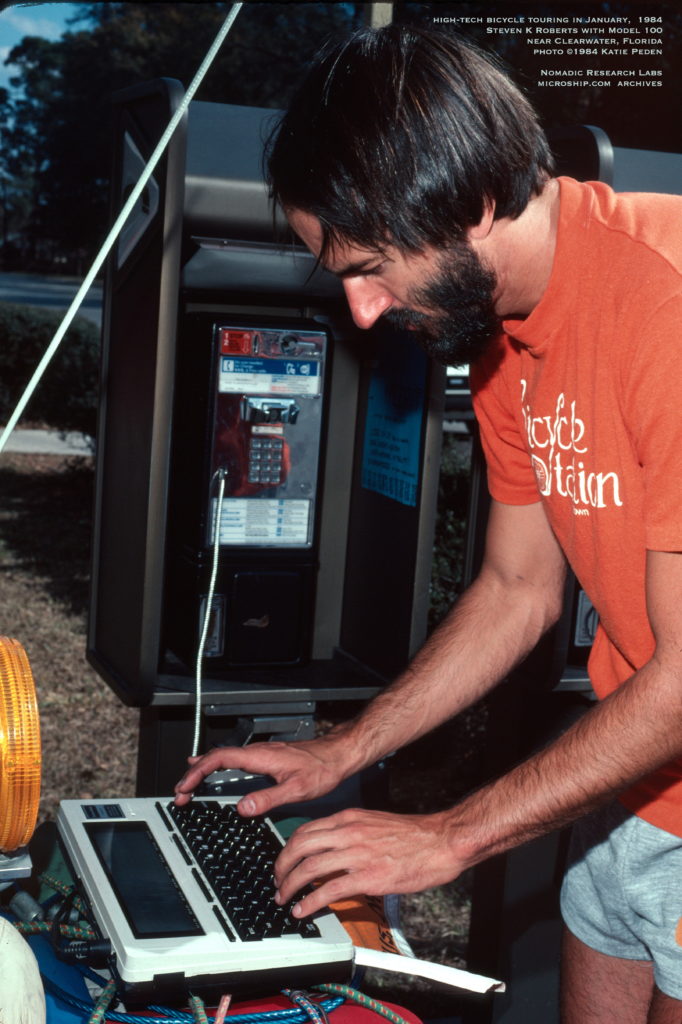
Nomadic Social Life
Traditionally, the life of a solo wanderer wasn’t one for a flagrant extrovert, but that’s changed, too. This system is an infallible conversation piece. It solves the problem of drifting through a town in quiet anonymity.
And then there is the 100, with all that it implies: CompuServe CB, EMAIL, and bulletin boards. Node cities are chances to keep a whole network of friendships alive — and since I publish an ongoing account of my journey, both on line and in print, there arc always invitations awaiting me when I check the old electronic mailbox.
The combined effect of all this is a sense of stability, of community — not a small consideration when your closest non-electronic friend is hundreds of miles away. It’s pleasing to put to such use a technology that many feared would have the opposite effect.
Extending the Idea
The system of hardware, files, people, and techniques that has evolved to support this venture turns out to have some interesting implications. It’s clearly useful for anyone in a full-time traveling mode, but extends well to others.
Consider, for example, the typical marketing executive. Frequently on the road for trade shows and visits to clients, this person probably suffers all the classic pains of business travel: being out of touch with the office, handling money, playing telephone tag, and losing the cohesiveness of the subordinates back home (while the cat’s away…). But with a portable computer, network access, and a stable assistant, a wandering-exec can be nearly as effective as he was before hitting the road.
The specific methods depend upon the kind of business. In my case, Kacy and I regularly exchange status messages and updates through a simplified electronic mail: since we are the only correspondents within that account, we just label the message files STEVE or KACY, depending on whom they are for. The disappearance of a file serves as acknowledgment of its receipt, and if one is still there when we want to add another, we just call the new one STEVE2 or whatever.
This works pretty well for day-to-day interaction, but lists of things to do can get lost that way. The solution is simple: a file called DO to which I add new items as necessary (“send a copy of the Online Today AI story to Ed Feigenbaum”). She flags these with either the word “done” or other commentary, and I periodically go through the file and clean out old tasks.
But the meat of the business is writing — and the generated text in the Model 100 is moved into a CompuServe work area as soon as I’m ready for Kacy to edit it and send it off to the publisher, or when I run out of space.
The system also includes a data-base-management system to handle a file of people who have offered accommodations, recipes (believe it or not), and storage of downloaded Dialog sessions and other research material. The point here is that such a system, based on a roving portable, a network, and a stable assistant, is applicable to almost any information-oriented business. The technology that has been developing for decades is in place and working well enough to have some of those long-promised liberating effects.
Oh, there are improvements that could be made. The 300 baud is an endless nuisance, some nodes are flaky, and there are still too many nodeless burgs — quaint backwaters of the information age. Switches can fail, and screens are too small. There’s never enough memory, of course, and a few million more modular phone jacks would let us discard bulky and sensitive acoustic couplers once and for all.
But all that notwithstanding, it’s reasonably easy to take a business on the road — breaking the chains that have traditionally bound us to our desks. And if that’s not what it’s all about, then what is?
Steve Roberts is the author of numerous articles on computer-related subjects, as well as three books including, Creative Design with Microcomputers and The Complete Guide to Microsystem Management (both Prentice-Hall, 1984). He lives full-time on the road and can be reached via CompuServe user ID 70007,362. He also appears now and then on CB simulator as “Wordy.”


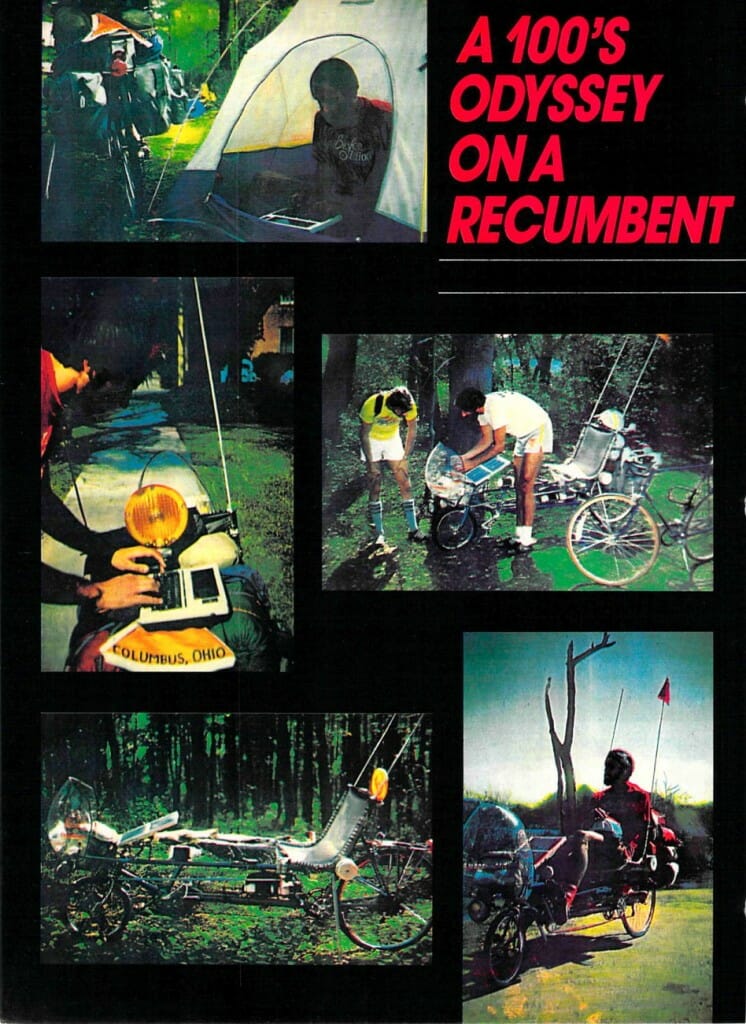
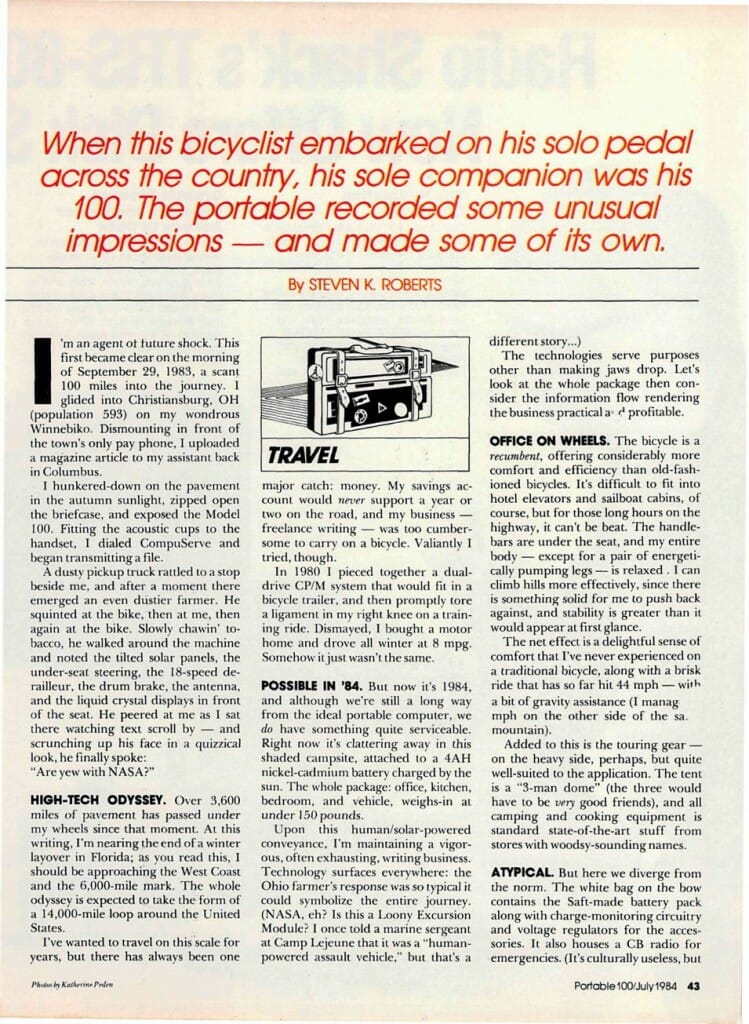
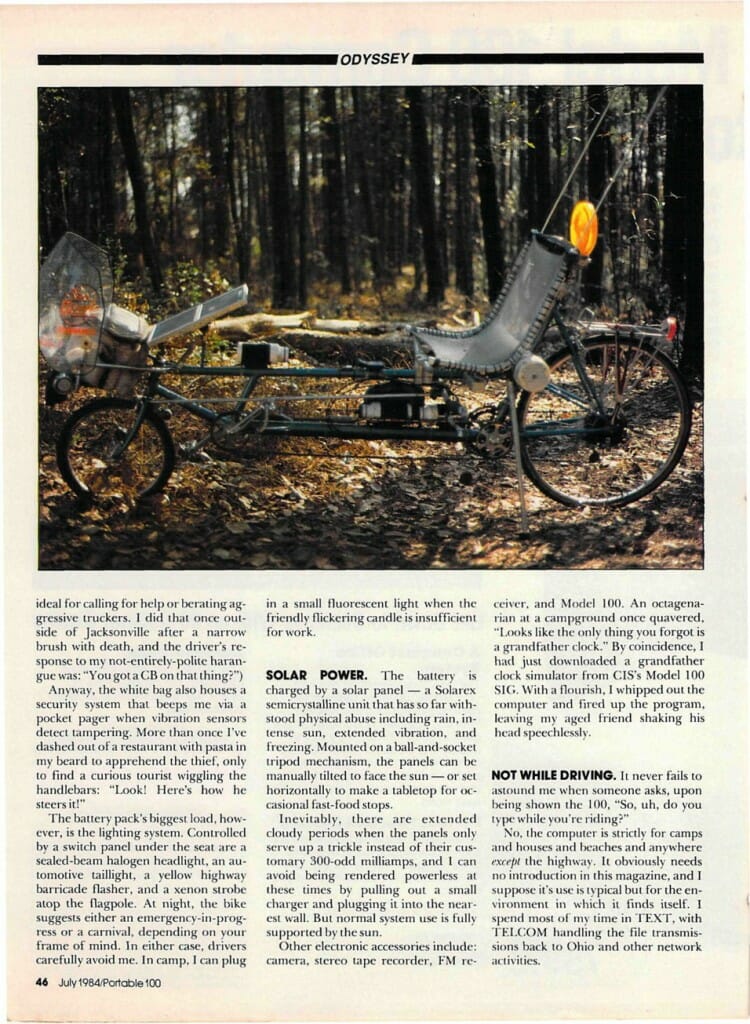
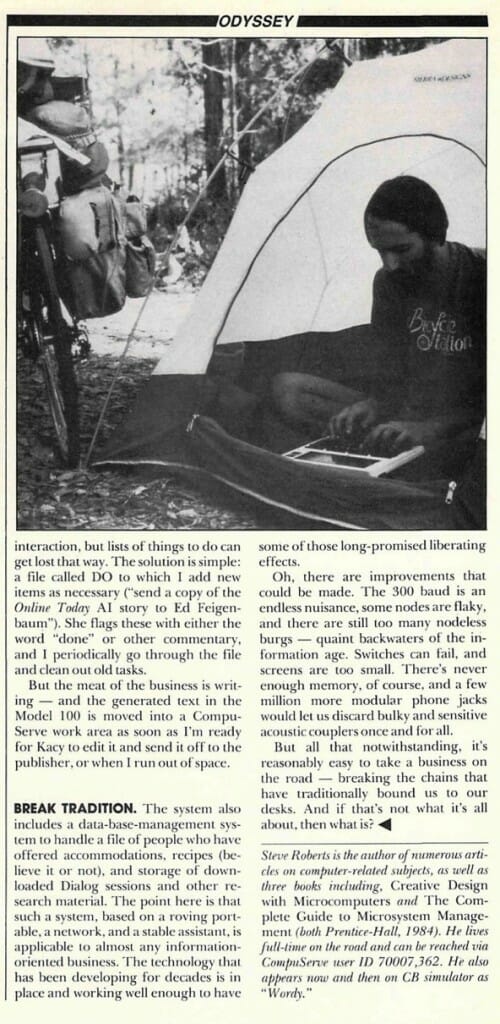
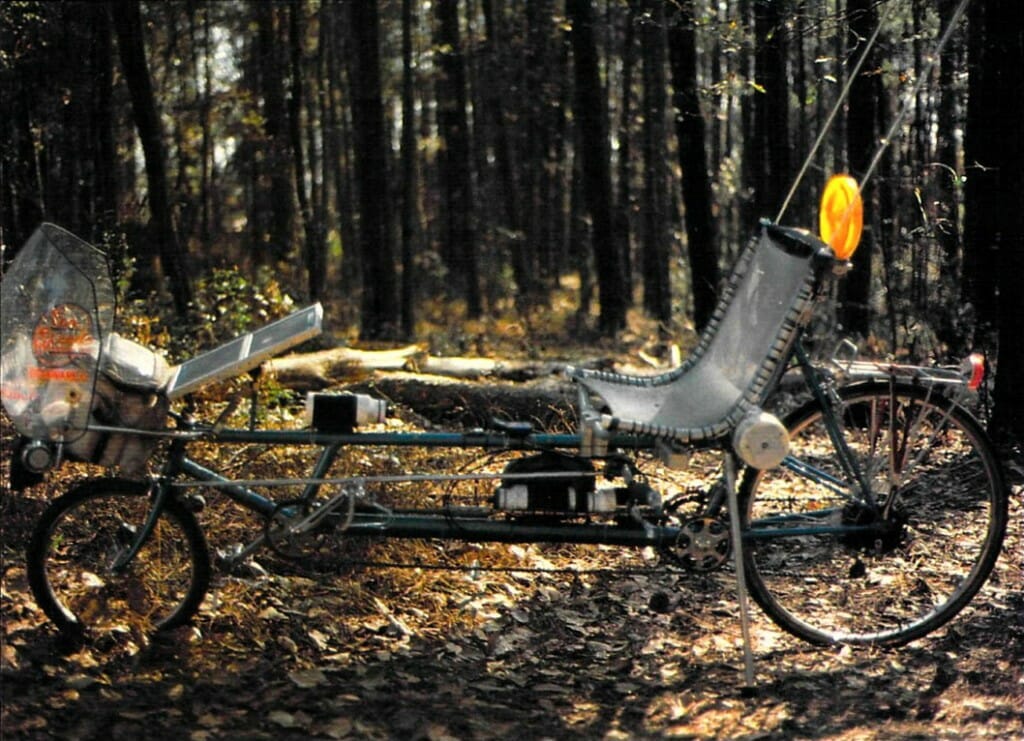
You must be logged in to post a comment.